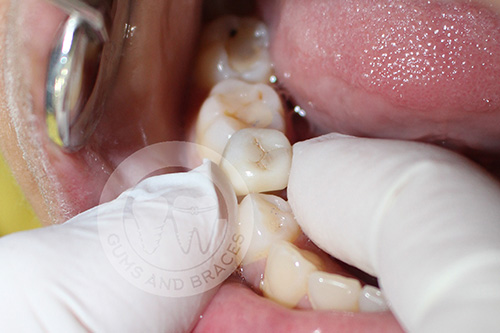The aim of any restorative treatment is to restore the tooth to its natural condition. In cases of decay, this is done by removing any caries (decay/cavity) from the tooth so that it does not progress further inside the tooth, necessitating (endodontic) ‘root canal therapy‘ . The tooth material removed must be replaced with a ‘filling’ material to regain its strength, not leaving it susceptible to further caries. Restorative treatments are also recommended in cases where a tooth fragment has fractured (chipped off), to cover congenital (present at birth) defects of the teeth, or for other aesthetic purposes.
- Direct – Fillings: Tooth coloured dental fillings are done to restore teeth that have been damaged by tooth decay (cavities) or injury. Cleaning and shaping of teeth prior to the filling is done. This procedure is normally extremely comfortable, without the need of any anesthesia.
- Indirect – For larger cavities, simple fillings may not suffice, requiring fabrication of a stronger ‘inlay’ or ‘onlay’, which are made in the laboratory and then cemented onto the tooth. They can be made of metal, ceramic, or even precious metals like gold. A full cap or crown may also be done. This is usually recommended after root canal therapy to protect the tooth weakened by the extensive decay.

Before Final Crown

Placing The Crown

Crown Cemented


